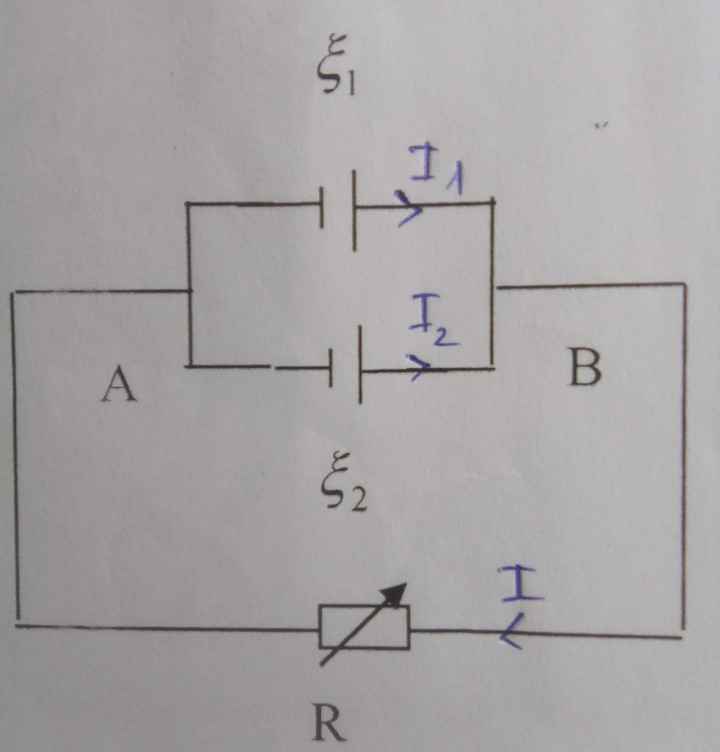Mắc hai nguồn nối tiếp:
\(\xi_b=n\cdot\xi=2\xi\)
\(r_b=n\cdot r=2r\)
\(\Rightarrow I_1=\dfrac{\xi_b}{r_{b1}+r}=\dfrac{2\xi}{3r}\)
Mắc hai nguồn song song:
\(\xi_b=\xi\)
\(r_b=\dfrac{r}{n}=\dfrac{r}{2}\)
\(\Rightarrow I_2=\dfrac{\xi_{b2}}{r_{b2}+r}=\dfrac{\xi}{\dfrac{r}{2}+r}=\dfrac{\xi}{\dfrac{3}{2}r}=\dfrac{2}{3}\cdot\dfrac{\xi}{r}\)
Vậy \(\dfrac{I_1}{I_2}=1\)
Chọn C
Mắc hai nguồn nối tiếp:
\(\xi_b=n\cdot\xi=2\xi\)
\(r_b=n\cdot r=2r\)
\(\Rightarrow I_1=\dfrac{\xi_{b1}}{r_{b1}}=\dfrac{2\xi}{2r}=\dfrac{\xi}{r}\)
Mắc song song:
\(\xi_b=\xi\)
\(r_b=\dfrac{r}{n}=\dfrac{r}{2}\)
\(\Rightarrow I_2=\dfrac{\xi_{b2}}{r_{b2}}=\dfrac{\xi}{\dfrac{r}{2}}=2\cdot\dfrac{\xi}{r}=2I_1\)
\(\Rightarrow\dfrac{I_1}{I_2}=\dfrac{1}{2}\)













